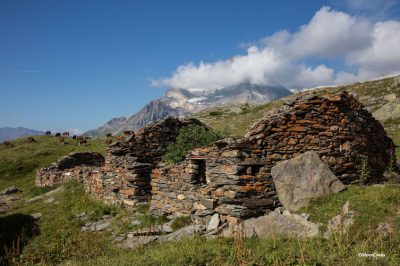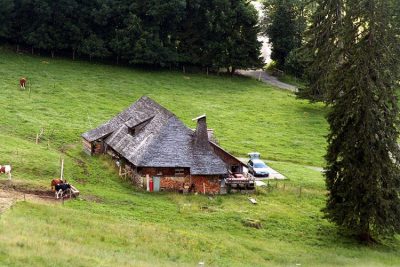The restoration of the alpine chalets
PDF
They often become second homes. The multiplication of restorations presents the risk of increasing the urbanization of the mountain despite the interest that a more inhabited mountain presents for the animation of local life or economy.
There are two scenarios. In the first case, the law allows restorations and reconstructions of old alpine chalets without linking the operation to an agro-pastoral use for the future. In the second case, the urban planning code refers to the limited extensions of existing alpine chalets, but these must be for the purpose of pursuing a seasonal professional activity.

How to recognize a real alpine chalet or summer building? These are “mountain pasture buildings traditionally used seasonally for the housing and professional needs of breeders and farmers”[2] (Figure 2).
A double authorization. Alpine chalets can be restored by following a procedure that requires two authorizations. A State authorization (decree of the prefect) is combined with the traditional urban planning authorization to carry out work, namely the building permit or the preliminary declaration.
The purpose of the State authorization is to ensure the heritage value of the chalet and the quality of the restoration project (respect for local architecture and materials, for example). It is subordinate to the institution by the mayor[3] an administrative easement prohibiting the use of the building in winter or limiting its use to take into account the absence of networks[4].
Once the prefect’s authorization has been obtained, the mayor of the municipality must be asked to[5] an authorization (building permit for example) whose purpose is to ensure compliance with common urban planning law. The authorisation may be rejected if the project is exposed to natural risks[6].
References and notes
[1] Art. L. 122-11 3° of the town planning code. To go further, see JOYE, J.-F., Le chalet d’alpage, nouvel enjeu d’urbanisation dans les pâturages, Constr.-Urb. 2015, study 4 p. 8-14.
[2] Tribunal administratif de Grenoble, Avis rendu au préfet de Savoie, 18 Jan. 2002 and circular n° 96-66 du 19 juillet 1996 (NOR : EQUU9610132C, BOMELTT, 20 Sept. 1996, 96/25 p. 25-30).
[3] He is competent in the presence of a local urban planning document, failing which the prefect is competent.
[4] Art. L. 122-11 5th paragraph of the Town Planning Code.
[5] He is competent in the presence of a local urban planning document, failing which the prefect is competent.
[6] Lyon Administrative Court of Appeal, 2 February 2006, No. 02LY02286, Préfet Savoie v. Commune Beaufort-sur-Doron.




